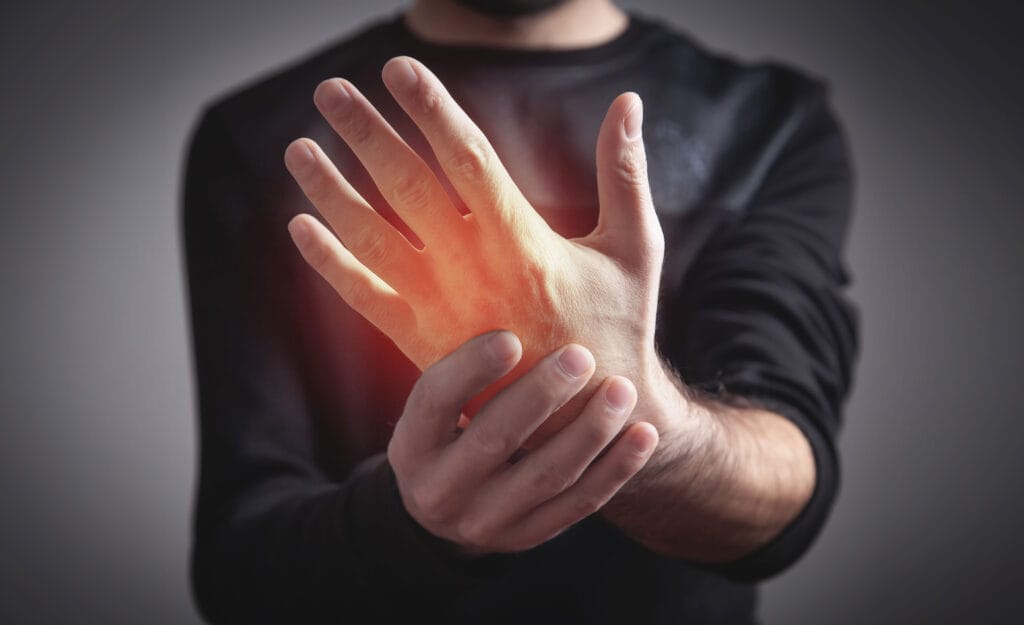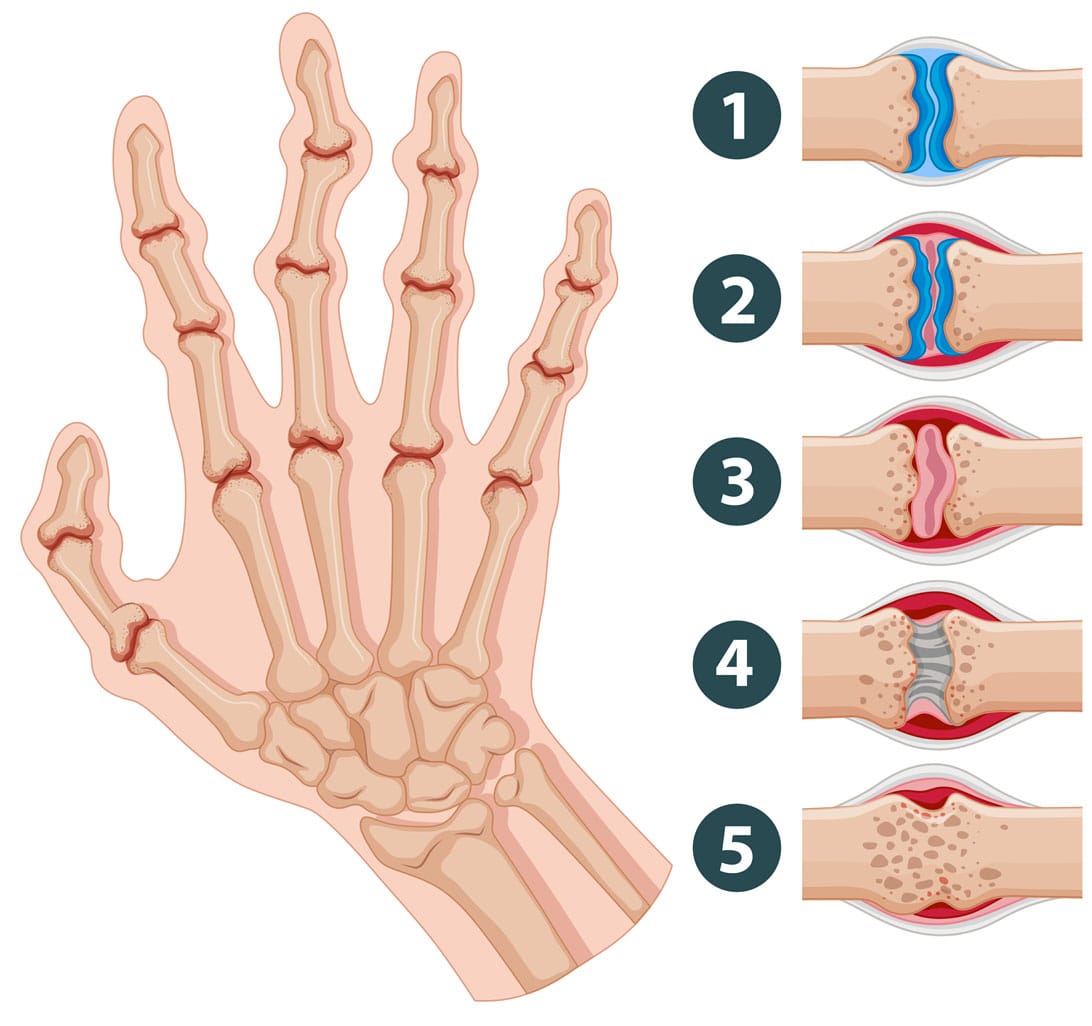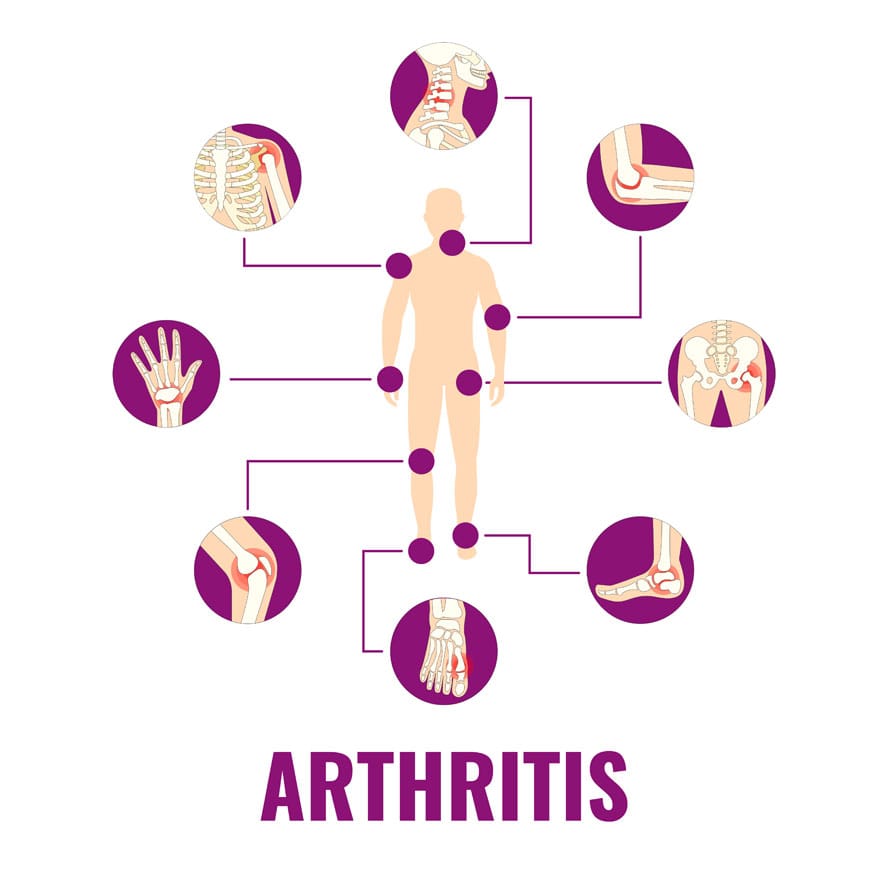- Mon- Sat: 8AM-9PM , Sunday (Closed)
- info@drprathaportho.com
Joint Pain- Arthritis Treatment in Hyderabad
Have Additional Questions?
-
KIMS Hospital,Near RTA Office, Kondapur, Hyderabad- 500084
(Mon - Sat, 8 to 4:30) - Mon - Sat, 8AM - 4:30PM

The degenerative joint disease known as arthritis can have a significant impact on your quality of life (areas where your bones meet and move). In most cases, arthritis manifests itself as joint inflammation or degeneration (also known as breakdown). When you move the joint after these adjustments, you might experience discomfort.
The following parts of the body are the most likely to be affected by arthritis:
- Feet
- Hands
- Hips
- Knees
- Lower Back
What are the types of arthritis
There are more than one hundred different forms of arthritis and disorders associated to it. Arthritis affects individuals of all ages, races, & genders, Although it is not a disease associated with age, certain kinds of arthritis are more prevalent in older people than in younger ones. The condition affects women more frequently than males.
Osteoarthritis
Osteoarthritis is the most prevalent type arthritis and is caused by degeneration of cartilage, the tough, gliding tissue that covers the ends of bones in a joint. Bone ends are protected by cartilage, which also allows for practically frictionless joint motion; but, if this cartilage is damaged, the bones may begin to grind against one another, resulting in pain and limited mobility. This deterioration can happen gradually over time, or it might be accelerated by a joint injury or infection. Bone alterations and a breakdown of the connective tissues that hold the joint together and connect muscle to bone are also caused by osteoarthritis. Inflammation and swelling of the joint lining can occur if cartilage in a joint is badly damaged.
Rheumatoid arthritis
The immune system malfunctions in rheumatoid arthritis, causing an attack on the lining of the joint capsule, a thick membrane that encloses all the joint elements. An inflammation and swelling of the synovial membrane. Joint cartilage and bone can be harmed by the illness process.
Juvenile arthritis (JA)
JA is a condition when the immune system attacks the tissue surrounding joints. In most cases, JA affects children aged 16 or younger.
Gout
If you suspect you have a ligament tear, it is important to seek medical attention as soon as possible to receive an accurate diagnosis and appropriate treatment.

What are the risk factors for arthritis?
There are a few things that can increase your risk of developing arthritis, including the following:
Age
The risk of developing arthritis increases with advancing years.
Lifestyle
Both smoking and a lack of physical activity have been linked to an increased risk of developing arthritis.
Gender
Regarding gender, the majority of arthritic conditions are more prevalent in women.
Weight
Being overweight places additional strain on your joints, which can contribute to the development of arthritis.
What symptoms are associated with arthritis?
The many forms of arthritis each manifest themselves in distinctive ways. They can be quite moderate for some people while being rather severe for others. The discomfort felt in the joints may be intermittent or it may be persistent. Among the most common symptoms are:
- Pain
- Redness
- Stiffness
- Swelling
- Tenderness
- Warmth
Treatment for arthritis
Joint function can be improved and arthritis symptoms alleviated with the right treatment. How severe your arthritis is, the symptoms you have, and your general health will all factor into what course of treatment is best for you.
Nonsurgical procedures
Medications
Arthritis sufferers may get relief from anti-inflammatory and painkilling drugs. Biologic drugs are designed to reduce inflammation caused by the body's immune system. Biologics may be suggested by your doctor if you suffer from psoriatic or rheumatoid arthritis.
Physical therapy
Some forms of arthritis may respond well to physical therapy. Strengthening the muscles around your joints and increasing your range of motion are both possible through exercise. It may be necessary to use splints or braces in some circumstances.
Surgical treatments
In the event that non-invasive treatments are unsuccessful, surgical options, such as joint repair, may be presented by your doctor.
Joint Repair
Sometimes, discomfort and dysfunction at a joint can be alleviated by smoothing or realigning the joint's surface. Arthroscopic techniques allow for the performance of these operations through minute incisions over the joint.
Joint replacement
As part of this surgery, the dysfunctional joint is surgically removed and a prosthetic is inserted in its place. The hips and the knees are the joints that are typically replaced.
Joint fusion
Joints in the hands, feet, and fingers are typically the ones targeted by this treatment. It involves cutting off the ends of the bones that make up the joint and then locking them together so that they heal as a single, immovable structure.
Why Dr. Prathap
There are many options for treating arthritis, but finding the correct professional is essential for doing so effectively.

- Dr. Prathap has extensive knowledge and experience in the field of rheumatic disorders, including arthritis. He has the training and experience to provide all-encompassing care for people with arthritis because he is an expert in the field of treating joints, muscles, and bones. That makes him the best doctor for arthritis in Hyderabad
- Dr. Prathap's proficiency at identifying the specific form of arthritis a patient is suffering from is one of his many skills. There are more than a hundred different kinds of arthritis, so it's crucial to acquire a correct diagnosis so that the appropriate medication can be administered. A thorough medical history, in-depth physical examination, appropriate laboratory testing, and appropriate imaging scans are all tools in his diagnostic toolbox for arthritic conditions.
- Dr. Prathap knows how to work with the patient to make a treatment plan that is just right for them.
- Dr. Prathap has a long history of success in treating arthritic patients, and he now focuses on stopping the disease before it even starts. This may include dietary and activity adjustments, as well as the use of disease-modifying medicines to mitigate the progression of joint deterioration.
FAQ’S
Arthritis is a group of conditions that cause pain and inflammation in the joints and surrounding tissues. There are over 100 types of arthritis, but the two most common are osteoarthritis and rheumatoid arthritis.
Symptoms of arthritis can include joint pain, stiffness, limited range of motion, swelling in the affected joints, and deformities in severe cases.
The cause of arthritis can vary depending on the type of arthritis. Osteoarthritis is caused by wear and tear of the cartilage in the joints over time, while rheumatoid arthritis is an autoimmune disorder in which the body’s immune system attacks the joints.
There is currently no cure for arthritis, but there are effective treatments available to manage symptoms and slow the progression of the disease.
An arthritis treatment specialist, also known as a rheumatologist, is a medical doctor who has received advanced training and expertise in the diagnosis and treatment of arthritis and other rheumatic diseases.
Treatment for arthritis can include medication, physical therapy, weight loss, assistive devices, surgery, and lifestyle changes such as regular exercise and healthy eating.
Yes, lifestyle changes such as regular exercise, healthy eating, and stress management can help manage arthritis symptoms and improve overall health.
In severe cases of arthritis, surgery may be recommended as a treatment option. Your doctor will discuss the risks and benefits of surgery with you.
Yes, carrying excess weight can put extra strain on the joints, particularly the hips, knees, and ankles, and can exacerbate arthritis symptoms. Losing weight can help reduce the stress on the joints and relieve pain.
WhatsApp us
